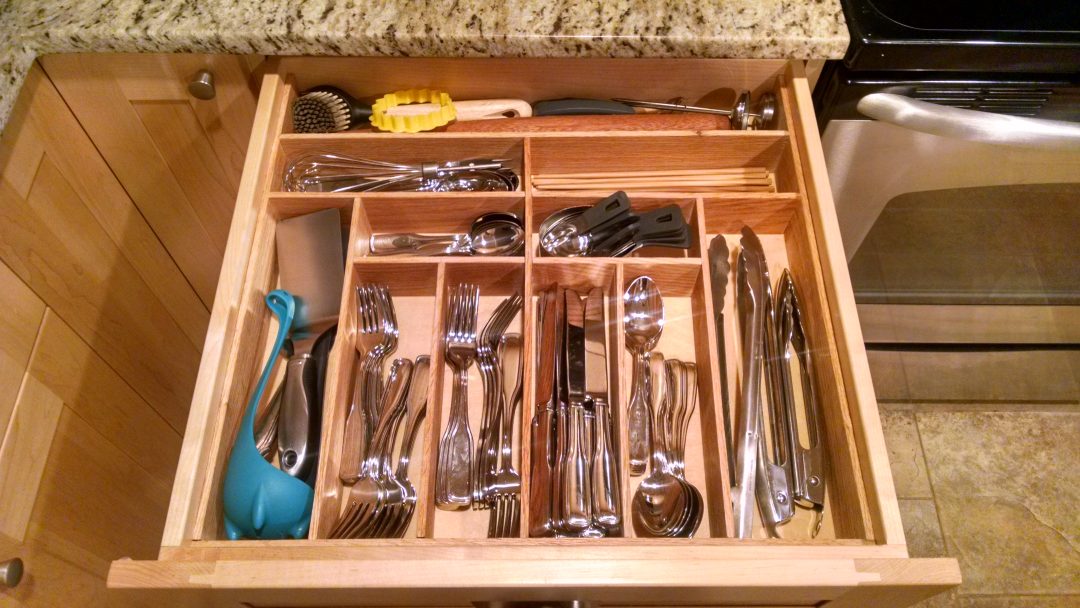When we purchased our new home, one thing was certain: it would be many years before we even attempted a kitchen renovation. Before moving in, the two of us performed as much due diligence on the property as we could: perform a home inspection, professionally survey for pest, and even stop over at the town’s Building Department to grab a copy of any permits that may have been pulled. We were not at all surprised to find out that the kitchen had received a major upgrade in 2014. It may not have been exactly the look we would have gone with, but it was fine work and would last us a good long while.
One thing that would frustrate us, however, was the lack of standards. Rich was particularly peeved over the sizing of possible utensil drawers. As Jews, we tend to need a lot of space for our cutlery – one drawer for meat-meal utensils and another for dairy. The only drawers capable of supporting a typical collection of about 12 sets of silverware were 24+ inches wide. With our former apartment’s little white plastic trays in place, we set off for what Hannah would deem a “retail opportunity”.
Little did we know that a typical cutlery drawer measured 19 to 21 inches. Outside of extremely costly options (as in upper three digit dollar signs), there were literally no manufacturer’s that built organizers for our oblong drawers. So, Rich set to work on building his own.
There are plenty of tutorials out there, but let us tell you they are wrong. If you would like to go this route, you’re going to need the following materials:
- 1/4″ thick hobby wood (Rich used oak)
- 18 gauge pneumatic nailer
- Tape measure
- Pencil
That’s it. When done properly, there is no need for a base piece of wood below the structure and no glue (no matter how super) will hold these boards permanently. One thing to note: be sure to measure the inner height of your cabinet first and foremost, not the height of your drawer face. Try to keep the height of the wood you purchase slightly below your inner height as things can shift. You don’t want to lock your drawers shut from the inside.
When you’re ready, simply measure the remaining inner dimensions and start planning. We found that laying out the items you wish to keep in your drawer in the locations you want them held to be a major boon to helping decide the desired size of the dividers. Try not to get ahead of yourself! After a piece has been cut, lay it loosely with the others to ensure your plan goes off without a hitch. Adjusting one piece at a time can be easy, but waiting until later could turn out to mean another trip to the lumber yard. If you don’t have access to a nailer, you may try hand nailing, but the more intricate your design, the more difficult that technique becomes. Here’s our dairy drawer, an exact copy of our meat drawer, in all of its glory:








No Comments